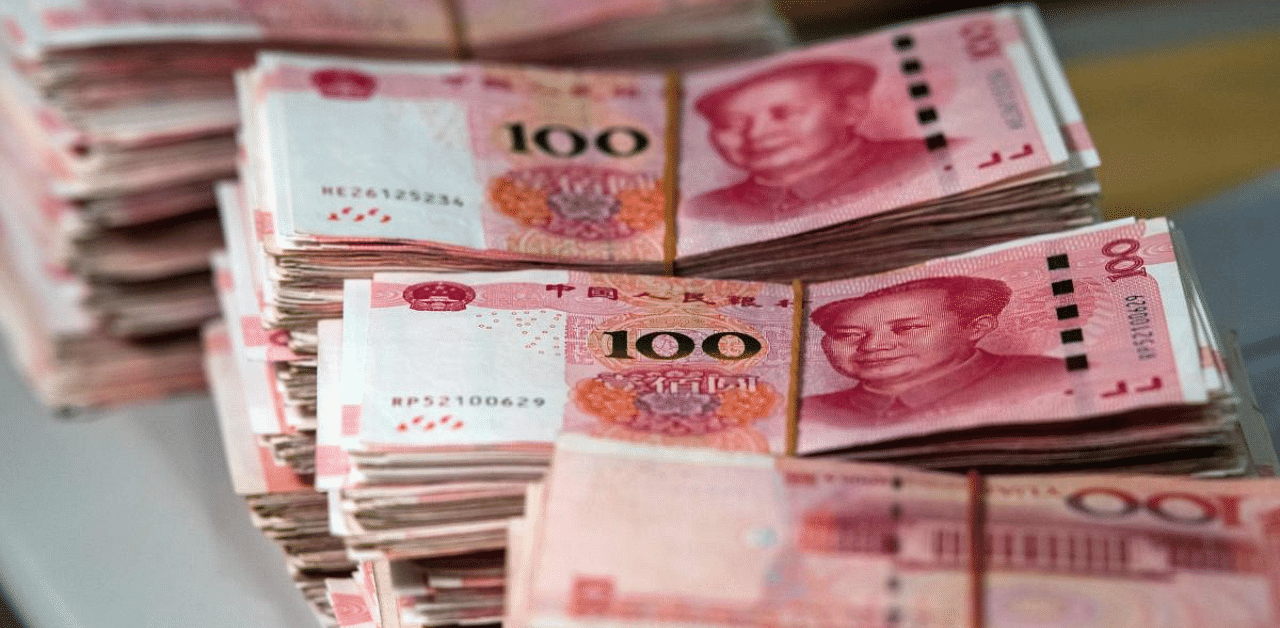
Chinese banks extended more new loans in August than the previous month, while broad credit growth quickened, pointing to continued policy support to help the economy recover from a coronavirus-induced slump.
Banks extended 1.28 trillion yuan ($187.25 billion) in new yuan loans, up from July and slightly exceeding analyst expectations, according to data released by the People's Bank of China (PBOC) on Friday.
Analysts polled by Reuters had predicted new yuan loans would rise to 1.22 trillion yuan in August as the economy continued to recover, up from 992.7 billion yuan in the previous month but largely in line with 1.21 trillion yuan a year earlier.
Household loans, mostly mortgages, rose to 841.5 billion yuan from 757.8 billion yuan in July, while corporate loans jumped to 579.7 billion yuan from 264.5 billion yuan.
Authorities have urged banks to offer cheaper loans and cut fees to help struggling businesses hit by the Covid-19 pandemic, though such support is weighing on lenders' margins. The country's five largest banks last month reported their biggest profit falls in at least a decade amid mounting bad loans.
August data so far suggests China's economic recovery is continuing to build up steam after a record slump in the first quarter fuelled by coronavirus outbreaks and lockdowns.
Exports rose at their quickest pace in over a year, while factory gate prices fell at a slower pace thanks to stronger industrial demand. Consumer demand, which has lagged, also appears to be turning the corner with auto sales up for a fifth straight month.
With activity rebounding, markets believe the central bank has shifted from emergency stimulus mode while it waits to see if earlier measures, such as sharply higher infrastructure spending, gain traction. Some analysts now believe there will be no more cuts to key interest rates this year.
Broad M2 money supply in August grew 10.4 per cent from a year earlier, central bank data showed on Friday, below estimates of 10.7 per cent forecast in the Reuters poll, which was the same pace as July.
Outstanding yuan loans grew 13.0 per cent from a year earlier, unchanged from the 13.0 per cent growth in July. Analysts had also expected 13.0 per cent growth.
Most China watchers prefer to focus on the annual growth figures, which are a better guide to underlying trends in credit creation given that net issuance figures are highly seasonal.
Annual growth of outstanding total social financing (TSF), a broad measure of credit and liquidity in the economy, quickened to 13.3 per cent in August from 12.9 per cent in the preceding month.
TSF is widely expected to be buoyed by a sharp acceleration in local governments bond issuance as they were asked to complete the issuance of special bonds by end-October.
Local government net debt issuance was at 920.8 billion yuan in August, finance ministry data showed, a sharp jump from 42.2 billion yuan in the previous month.
TSF includes off-balance sheet forms of financing that exist outside the conventional bank lending system, such as initial public offerings, loans from trust companies and bond sales.
In August, TSF jumped to 3.58 trillion yuan from 1.69 trillion yuan in July. Analysts polled by Reuters had expected August TSF of 2.73 trillion yuan.